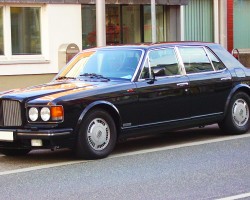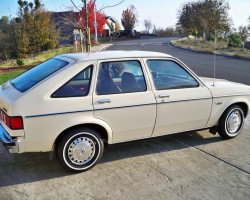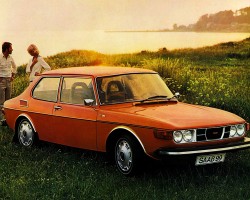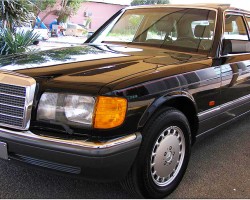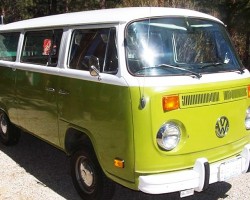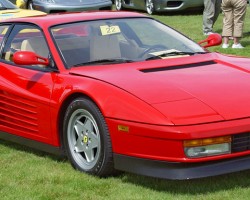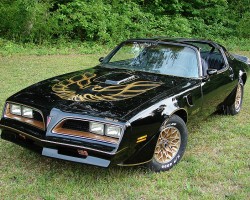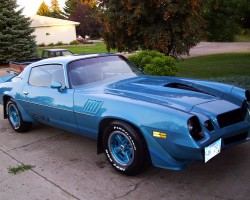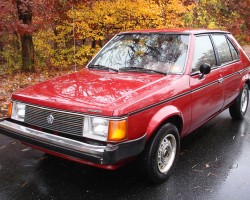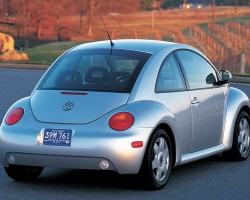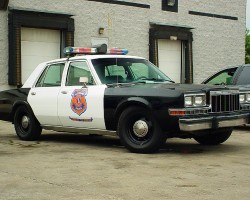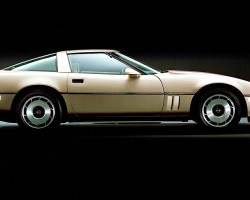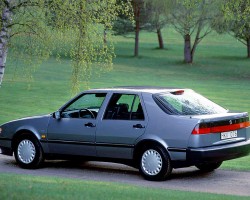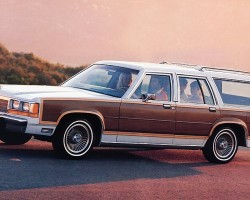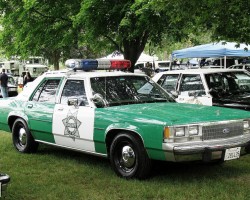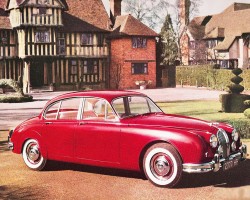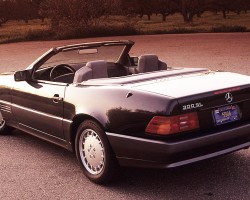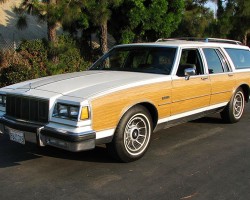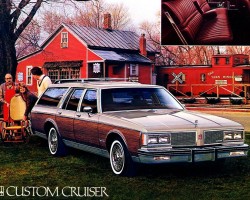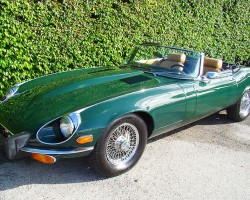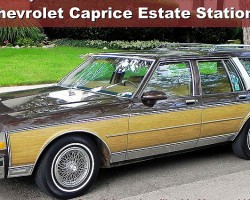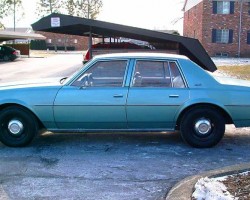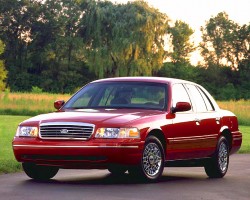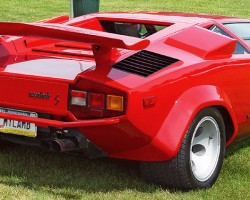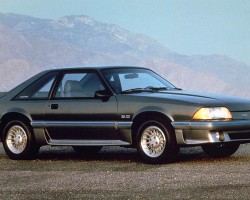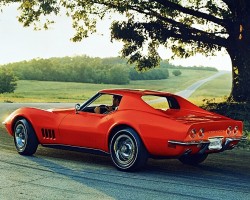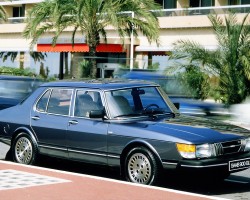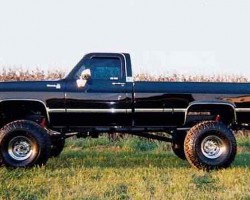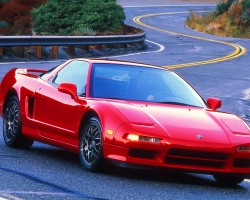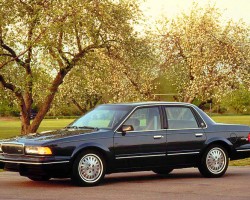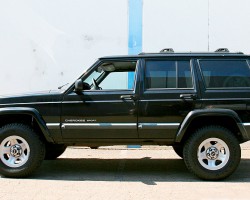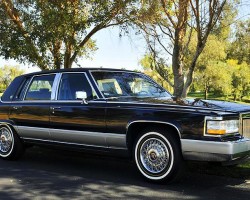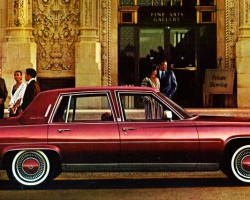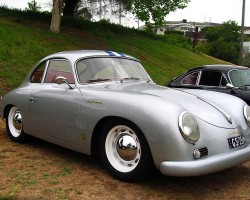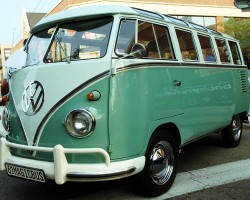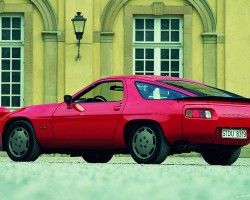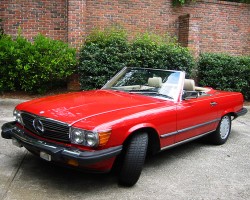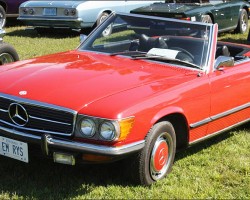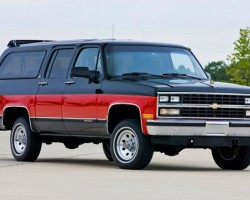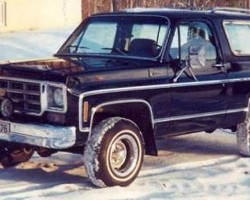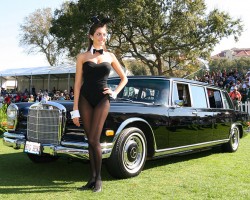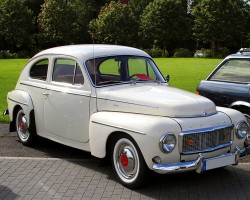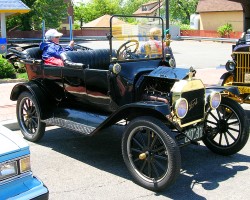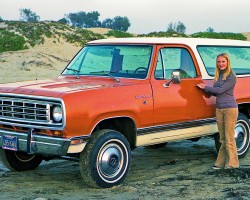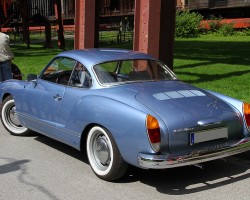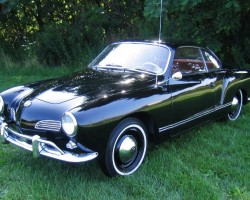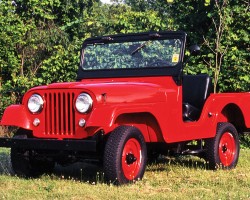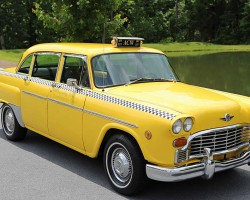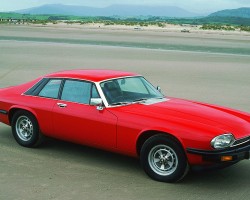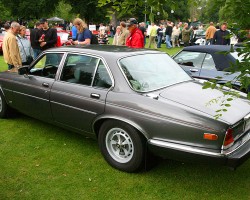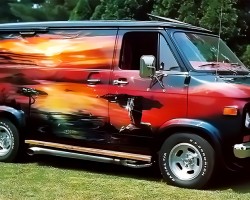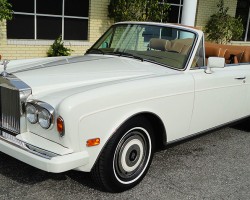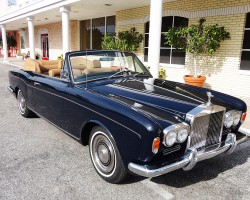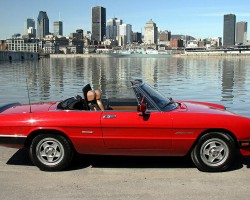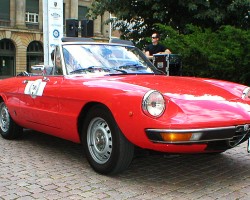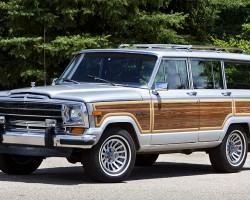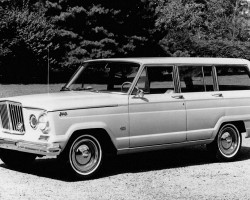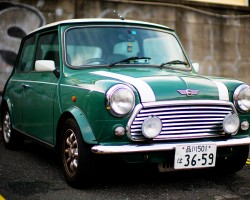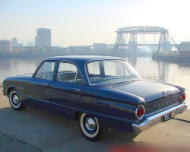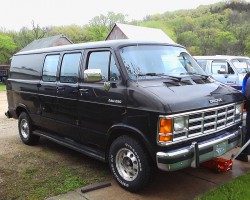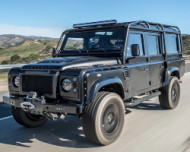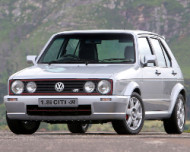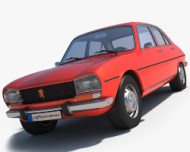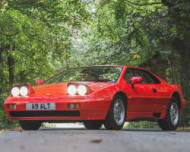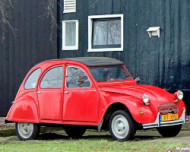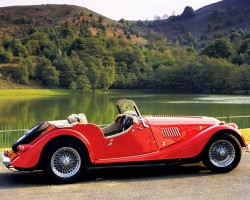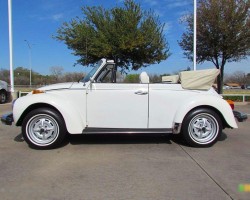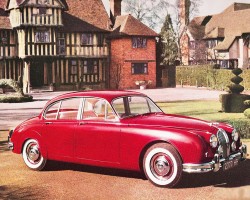
To answer to my question of how many car model designs (such as this ’87 Volvo 240) have gone the distance by lasting 12 model years or more, I did some research. Findings are in the slideshow at the end of this article.
The Beetle had the number 1 longest-running automotive design. But you may not guess what numbers 2 through 50 are…
If a car design is right from the start, it does not need to be changed for the sake of change because it will stand the test of time well on its own merits.
This subject came to mind when parking a 1991 Mercedes S-Class I own next to an identical-looking one. Until a look at the registration tag in the window confirmed the other car was actually an ’81 model, I assumed it might be the same year as mine. An easy mistake to make because all of the body panels on these two cars are 100 per cent identical and interchangeable. Since the owner of the ’81 380SEL had fitted his car with ’86-style wheels and headlights, he fooled me into seeing his car as ten years newer.
The design of the 1980 – 1991 S Class the unknown stranger and I both owned ran a dozen model years without buyers tiring of it. I recalled the design of another favorite car I had previously owned (a ’79 Cadillac Sedan de Ville) that had a lengthy design run of sixteen model years. From 1977 to 1992, it only received two minor cosmetic updates. That had to be some kind of record I figured.
I did some research into automotive history – ultimately finding the Cadillac’s 15 years and the Mercedes’ dozen years did not even approach the longest-duration vehicle designs. I found only two designs originating in the last 20 years that made the list at all, squeaking onto the very bottom.
Younger generations may find this all difficult to believe, since we have grown used to car makers redesigning most models every five to seven years. Fiercer competition than ever has left most automakers living in fear of somehow becoming stale. Fear has washed away the confidence to create original designs with clean, balanced, and elegant lines. Swollen, awkward-looking shapes prevail. No, automotive design is not the art form it once was. Computers have streamlined things to a lower common denominator.
Here, I’ve attempted to consider various vehicles sold in markets around the world, because many of them on the list were sold in developing nations long after being offered in the United States or mainstream European countries.
SLIDE SHOW. CLICK ON ANY OF THE PICTURES IN THE SLIDE SHOW BELOW TO EXPAND TO FULL SIZE. USE ARROWS UNDERNEATH PICTURES TO SCROLL BACKWARD OR FORWARD.
- To answer to my question of how many car model designs (such as this ’87 Volvo 240) have gone the distance by lasting 12 model years or more, I did some research. Findings are in the slideshow at the end of this article.
- (12 model years) 1986 – 1997 BENTLEY TURBO R. Although the Bentley Turbo was built on a traditional Rolls Royce body, it brought a monochromatic paint look and better-handling suspensions to the fold. 1989 model shown – Photo credit: F. Clemonts
- (12 model years) 1976 – 1987 CHEVROLET CHEVETTE. While the Chevette was General Motors’ first answer to the Volkswagen Rabbit, it lacked the VW’s front-wheel-drive. As GM debuted other small cars, it kept the Chevette in production as a low-price leader through 1987. Here a 1980 model is shown – Photo credit: S. Gibbons
- (12 model years) 1969 – 1980 SAAB 99. Saab’s predecessor to its more popular 900 series ran for an equally long duration. Here a 1975 model is shown.
- (12 model years) 1980 – 1991 MERCEDES S-CLASS. This “126 body” generation was the longest-running S-Class design to date. Body panels remained unchanged through the entire design run. 1990 model shown
- (12 model years) 1968 – 1979 VOLKSWAGEN MICROBUS VAN. The second-generation of the VW fan featured new body panels over a familiar rear-engine layout. Here a final-year 1979 model shown.
- (12 model years) 1985 – 1996 FERRARI TESTAROSSA / 512TR. While some Ferrari designs prove more popular than others, the company’s mid-engined V12 supercar immediately became an ’80s icon. It was rebadged the “512TR” for 1992. Here a 1988 Testarossa shown.
- (12 model years) 1970 – 1981 PONTIAC FIREBIRD / TRANS AM. Pontiac’s version of the Camaro had an equally long design run. 1977 Trans Am shown.
- (12 model years) 1970 – 1981 CHEVROLET CAMARO. The second-generation Camaro proved so popular among baby boomers seeking “personal luxury” styling with performance that only minor front and rear end revisions were made during the design run. 1981 model shown.
- (13 model years) 1978 – 1990 DODGE OMNI / PLYMOUTH HORIZON. Inspired by the front-wheel-drive VW Rabbit of 1975, Chrysler Corporation created their own larger version. 1988 Omni shown.
- (13 model years) 1998 – 2010 VOLKSWAGEN NEW BEETLE. VW created a modern, front-wheel-drive version of its economy car classic for 1998. Popularity with buyers kept this design running with only a minor freshening for 2006. Here a first-year 1998 New Beetle is shown – Photo credit: A. Moody
- (13 model years) 1977 – 1989 DODGE DIPLOMAT SEDAN. The Diplomat was Dodge’s version of Chrysler Corporations answer to the compact, crisp Cadillac Seville of 1976. These remained popular in base form as police cars and in high-end versions with padded vinyl roofs, whitewall tires, and wire wheel covers. Here a 1985 model is shown –
- (13 model years) 1984 – 1996 CHEVROLET CORVETTE. The 4th generation Corvette saw a return to high performance. Well-balanced styling lasted 13 model years, and many felt it could have gone that many more before changing. Here a first-year 1984 model is shown.
- (13 model years) 1986 – 1998 Saab 9000. This was Saab’s first truly upscale model, and this design run reflected Saab’s best years in the United States. Here a first-year 1986 model shown – Photo credit: Saab Scania
- (13 model years) 1979 – 1991 FORD LTD WAGON. This generation of full-size Fords was the last one to feature station wagon versions. After 1991, the “LTD” moniker was dropped in favor of “Crown Vic”. Here a 1988 LTD Country Squire wagon is shown.
- (13 model years) 1979 – 1991 FORD LTD SEDAN. Similar to Chevrolet’s Impala/Caprice, Ford’s LTD featured traditional American car styling that proved popular. Only one front and rear styling update occurred for 1988. Here a 1991 model is shown.
- (13 model years) 1956 – 1968 JAGUAR MARK II SEDAN. Known as the “2.4”, “3.4”, “3.8”, and “Mark II”, these were produced without changes through 1968 when the XJ sedan replaced it.
- (13 model years) 1990 – 2002 MERCEDES SL 2-SEATER. For the first time in almost two decades, Mercedes offered a sporty 300SL version of its roadster with a six cylinder and manual transmission in the U.S. While that didn’t last, the design itself did. 1990 300SL shown.
- (14 model years) 1977 – 1990 BUICK ELECTRA ESTATE WAGON. Similar to sister Olds versions, these big American wagons were among the last of their kind and will likely be collectible in the long run. 1988 model shown – Photo credit: www.autogaleria.hu
- (14 model years) 1977 – 1990 OLDSMOBILE CUSTOM CRUISER WAGON. While full-size rear-wheel-drive Olds sedans departed after ’85, wagons were kept in original form another five years. 1983 model shown.
- (14 model years) 1961 – 1974 JAGUAR XKE. One of Jaguar’s most recognizable designs, the XKE was also the company’s last “wire-wheel” sports car. Here a final-year 1974 model is shown.
- (14 model years) 1977 – 1990 CHEVROLET IMPALA / CAPRICE WAGON. More luxurious Caprice versions such as this ’88 Estate wagon continued to sell well through 1990. Here a 1988 Caprice is shown.
- (14 model years) 1977 – 1990 CHEVROLET IMPALA / CAPRICE SEDAN. GM’s lowest-priced full size car saw downsizing earlier than rivals did, and its clean lines and smaller size proved popular with buyers. These downsized coupes, sedans and wagons were #1 sellers for multiple years during their design run. Here a 1977 base Impala is shown.
- (15 model years) 1998 – 2012 FORD CROWN VICTORIA SEDAN. Not many modern cars can hold onto one design for long, but the most recent and final Crown Victoria is an example. Ford originally planned to replace it sooner, but kept it in production alongside other offerings due to its popularity with police and taxi fleet buyers. 1998 model shown – Photo credit: Ford Motor Company
- (15 model years) 1975 – 1989 LAMBORGHINI COUNTACHE. 1984 model shown.
- (15 model years) 1979 – 1993 FORD MUSTANG. While 1987 Mustangs got the most noticeable aero updates, body panels remained basically the same for 14 years. Here a 1988 model is shown.
- (15 model years) 1968 – 1982 CHEVROLET CORVETTE. While Corvettes do not need frequent restyling, this third generation probably featured the widest variety of underhood updates to match the wildly changing times from late 1960s to early ’80s. Here a first-year 1968 model is shown –
- (15 model years) 1979 – 1993 SAAB 900. Saab’s 900 took earlier 99 model styling and advanced it, retaining its popular appearance for over a dozen years. Here a 1982 model is shown – Photo credit: Saab Scania
- (15 model years) 1973 – 1987 or 1991 FULL SIZE PICKUP. Chevrolet’s full size pickups used Blazer and Suburbans until two-door pickups were redesigned for 1988. 4-door crew cab and special use pickups retained older Blazer/Suburban styling through 1991. Here a 1977 model is shown –
- (15 model years) 1991 – 2005 ACURA NSX. Honda’s Acura division created the NSX to be the first ever “Japanese supercar”. It was the first production car to feature an all-aluminum body. Light weight allowed its V6 engine to deliver performance matching the priciest German and Italian rivals. Here a 1999 model is shown.
- (15 model years) 1982 – 1996 BUICK CENTURY. GM’s first front-wheel-drive family cars were initially sold in Chevy Celebrity, Pontiac 6000, and Olds Ciera form as well. Only Buick and Olds versions survived long enough to make this list. 1996 model shown – Photo credit: W. Sawyer
- (18 model years) 1984 – 2001 JEEP CHEROKEE. The Cherokee of 1984 introduced compact 4-door sport utilities to the American market. Squared-off proportions and off-road ability made these popular with buyers, and styling was retained with few updates. Here a 1996 model is shown – Photo credit: J. Costaldo
- (16 model years) 1977 – 1992 CADILLAC FLEETWOOD BROUGHAM SEDAN, PICTURE B. These large, rear-wheel-drive cruisers were planned to be out of production by 1985, but lower gas prices and high demand kept them in sailing on with few changes. Final year 1990-92 models received aero headlamps and Mercedes style gray plastic body cladding. Here a 1991 model is shown.
- (16 model years) 1977 – 1992 CADILLAC FLEETWOOD BROUGHAM SEDAN, PICTURE A. These full-size Cadillacs introduced for 1977 were the first American luxury cars to be downsized for a changing world. While losing a foot in length, the ’77 model’s boxier shape allowed virtually similar interior room to the ’76. Here a 1978 model is shown.
- (18 model years) 1948 – 1965 PORSCHE 356. VW Beetle creator Ferdinand Porsche was finally able to launch his own company after WWII with the 356 model. Mechanical layout is similar to its 911 successor.
- (18 model years) 1950 – 1967 VOLKSWAGEN TRANSPORTER VAN. Styling of the first VW vans is considered different enough from later “Microbus” versions by owners to break them into two categories. Here a 1961 model is shown – Photo credit: J. Nunez
- (19 model years) 1978 – 1995 PORSCHE 928. Porsche envisioned its first front-engined, V8-powered model as a replacement for the 911, but ultimately changed those plans. Here a first-year 1978 model is shown.
- (18 model years) 1972 – 1989 MERCEDES SL 2-SEATER, PICTURE B. Here, a final and more advanced 560SL model is shown – Photo credit: K. Simmons
- (18 model years) 1972 – 1989 MERCEDES SL 2-SEATER, PICTURE A. While “107 body” SLs saw many model name changes from 350SL to 560SL, only bumpers and wheels changed externally. Here a 1973 450SL is shown – Photo credit: T. Higgins
- (19 model years) 1973 – 1991 CHEVROLET SUBURBAN. 4-door Suburbans mirrored changes that Blazers saw. Here a final-year 1991 model is shown.
- (19 model years) 1973 – 1991 CHEVROLET BLAZER FULL SIZE. The Chevrolet Blazer of 1973 set styling parameters for SUVs that were immediately followed by Dodge and Ford. Here a first-year 1973 model is shown.
- (19 model years) 1963 – 1981 MERCEDES 600 LIMOUSINE. Mercedes-Benz’s 600 “Grosser” limousine models were low production, high-end automobiles popular with political figures of all nationalities. Later year 600s were produced by order only in far fewer numbers. Here a 1972 model owned by Hugh Hefner is auctioned off.
- (19 model years) 1947 – 1966 VOLVO PV444 / PV544. While model designations changed from 444 to 544 for 1959, Volvo’s midsize car remained virtually unchanged otherwise. Here a final-year 1965 PV544 is shown – Photo credit: G. Schwalbach
- (20 model years) 1908 – 1927 FORD MODEL T. The Model T of 1908 was the first automobile to be produced on an assembly line, and sold over 15 million copies during its two decade run. Here a 1915 model is shown – Photo credit: Sean Connor
- (20 model years) 1974 – 1993 DODGE RAMCHARGER FULL-SIZE. Influenced heavily by Chevy’s Blazer that debuted one year earlier, the RamCharger saw an even longer life span. Here a 1974 model is shown – Photo credit: Lance and Cromwell
- (20 model years) 1955 – 1974 VOLKSWAGEN KARMANN GHIA, PICTURE B. The Karmann Ghia was replaced by the 1975 front-wheel-drive Scirocco. Here a final-year 1974 model is shown.
- (20 model years) 1955 – 1974 VOLKSWAGEN KARMANN GHIA, PICTURE A. Built off the rear-engine Beetle platform, Karmann Ghias saw only minor changes. Here a first-year 1955 model is shown.
- (21 model years) 1955 – 1975 JEEP CJ5. The CJ5 was Jeep’s first update of its World-War II military vehicle. CJ5s were popular with off-roaders and post offices. The larger, but similarly styled, C7 replaced it for 1976. Here a first-year 1955 model is shown.
- (22 model years) 1961 – 1982 CHECKER MARATHON. Checkers were initially sold as passenger cars to the public, but the company’s choice to forego updates in favor of low prices made them a staple of the livery market. Here a 1971 model is shown.
- (22 model years) 1975 – 1996 JAGUAR XJS. Jaguar replaced its popular XKE model with this design which lasted over two decades. A soft top model was added for 1986. Here a 1975 model is shown – Photo credit: Jaguar Cars North America
- (24 model years) 1968 – 1991 JAGUAR XJ SEDAN. XJ sedans were powered by 6 or 12-cylinder engines. While 1987 was the last year this design was sold in the U.S., it remained in production through 1991 as a “Daimler Double Six” model in Canada. Here a 1985 model is shown.
- (26 model years) 1971 – 1996 CHEVROLET FULL SIZE VANS. Here a 1976 customized Chevy Beauville van is shown.
- (29 model years) 1967 – 1995 ROLLS ROYCE CONVERTIBLE, PICTURE B. The Silver Cloud was renamed Corniche in 1971. Here a final year 1995 Corniche is shown.
- (29 model years) 1967 – 1995 ROLLS ROYCE CONVERTIBLE, PICTURE A. In keeping with tradition, Rolls and sister Bentley convertibles changed little over the years – just the way customers wanted it. Here a first-year 1967 Silver Shadow is shown.
- (29 model years) 1966 – 1994 ALFA ROMEO SPIDER, PICTURE B. While the Spider went out of production during 1993, final models were badged as 1994s for U.S. sale. Here a 1986 model is shown.
- (29 model years) 1966 – 1994 ALFA ROMEO SPIDER, PICTURE A. While the Spider survived many minor spoiler, bumper and wheel revisions over its lifespan, its basic shape was the same. Here a 1966 model is shown.
- (29 model years) 1963 – 1991 JEEP WAGONEER / GRAND WAGONEER, PICTURE B. The Wagoneer’s design survived company ownership by Willys-Overland, Kaiser, AMC, and Chrysler. 1991 model shown.
- (29 model years) 1963 – 1991 JEEP WAGONEER / GRAND WAGONEER, PICTURE A. The Wagoneer is often credited as the 4-door sport utility that made this segment popular. Here a 1963 model is shown.
- (32 model years) 1959 – 2000 MINI. Once sold as the “Morris Minor” and “Morris Mini”, original Minis changed almost imperceptibly over 30+ years until going out of production in 2000. Shown is a 1989 Mini.
- (32 model years) 1960-91 Ford Falcon Although the first-generation Ford Falcon was only sold in the U.S. from 1960-63, it continued on for decades longer in this form for the Argentina market until 1991. Along the way, it did receive several facelifts to give it a more contemporary, European flavor.
- (32 model years) 1971 – 2003 DODGE FULL SIZE VANS. Originally sold as the “Dodge Tradesman”, Dodge’s full size vans saw production spanning four decades with minor cosmetic revisions. Shown here is a 1992 Ram van. (Photo credit: T. Ingersoll)
- (34 model years) 1983-2016 LAND ROVER DEFENDER. Derived from Land Rover’s Series 1-3 models that had been in production since 1948, the new Defender featured a refreshed design, new coil springs, a wider track, and a greater variety of wheelbases. Sold in the United States only during the 1994-97 model years, original Defenders remain popular as imports – popularity which, notably, inspired Land Rover to bring the Defender back as a modernized 2020 model.
- (35 model years) 1975 – 2009 Mark 1 VW GOLF / RABBIT The first-generation VW Golf was one of the company’s earliest front-wheel-drive applications developed after acquiring Audi in the late 1960s. This “Mark 1” platform was initially offered as a 3-door hatch, 5-door hatch, and convertible spanning the 1975-84 model years in most markets, with the convertible Cabriolet model using the platform until 1993. However, some countries still saw variations of the original Rabbit produced long past 1984. In Brazil, for example, the 2-door Mark 1 pickup was marketed as the “Caddy” through 1994, and the 5-door hatchback had a long run as the “Citi Golf” through the 2009 model year. In the picture is a 2006 Citi Golf R model.
- (36 model years) 1969-2006 PEUGEOT 504 Peugeot’s mid-size rwd 504 was sold across the globe for the 1969-83 model years, including the United States. After Peugeot phased the design out in most areas in favor of more modern designs, the original 504 was kept in production due to its popularity in rough-terrain countries such as Brazil, Argentina, Australia, Ivory Coast, Ghana, Cameroon, Benin, Kenya and Nigeria. Ultimately, the 1969 design lasted until 2006 in Nigeria.
- (39 model years) 1976-2004 LOTUS ESPRIT. The Esprit is a mid-engine sports car built by Lotus in the United Kingdom between 1976 and 2004. Known for its light weight and impressive performance, the Esprit saw three updates along the way, along with numerous special edition and turbocharged versions.
- (40 model years) 1979 – 2018 MERCEDES GALAENDEWAGEN. The “G-Wagen” was introduced as a go-anywhere military vehicle for 1979. It’s shape has worn well and has remained unchanged. This model was not imported into the U.S. by Mercedes until 2002. This Mercedes press photo commemorates the G-wagen’s 30 year anniversary with mainly 1979 and 2009 models –
- (43 model years) 1948-1990 CITROEN 2CV. With an look that didn’t change one bit, the 2VC was an air-cooled front-engine, front-wheel-drive economy car manufactured in France between 1948 and 1988, then finally in Portugal until 1990. As with many older European cars, unchanged designs were kept in production for less developed regions around the world. Ultimately, almost 4 million 2CVs were produced during its lifespan. Above, a 1989 model is shown.
- (62 model years) 1951 – 2012 MORGAN PLUS 4 / PLUS 8. The Morgan’s basic design originated in 4-cylinder “Plus 4” form for 1951. An 8-cylinder “Plus 8” model was added for 1968. Both models have been produced on and off over the years, with fenders of varying widths to accomodate more modern wheels. Here a 1968 Plus 8 is shown.
- (66 model years) 1938 – 2003 VOLKSWAGEN BEETLE. The Beetle was created as an affordable car for citizens of Germany, and saw many incremental updates over the years. While 1979 was the last model year for Beetle sales in the U.S., it was produced in Mexico until 2003. Here, a 1979 model is shown.
- Only two passenger car designs originating within the last 30 years can claim to have lasted long enough to be on this list. 1959 Jaguar Mark II shown


